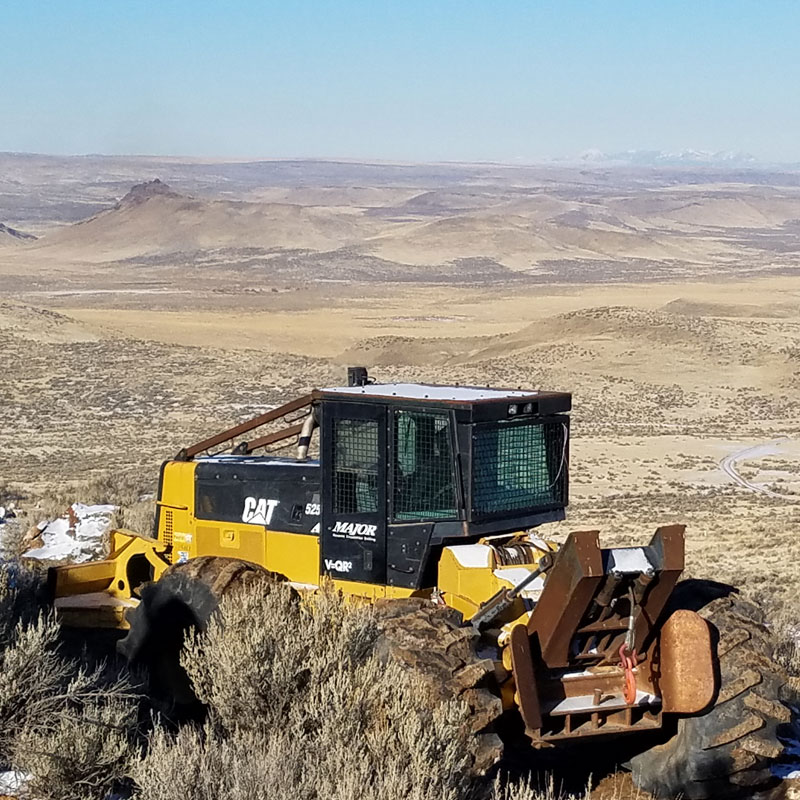- Home
- Frost
- info@paramountnevada.com
- 844-488-2233
-
Subscribe
Overview
Since entering Oregon in 2016 with the acquisition of the Grassy Mountain gold project, we have gained valuable insights of the geology including and surrounding Grassy Mountain and significant knowledge of the state permitting process creating a first mover advantage in the State.
On November 14, 2018, we entered into an agreement with Ely Gold Royalties a wholly owned subsidiary of Gold Royalty Corp (NYSE: GROY) to purchase a 100% interest in 896 acres known as the Frost Project (“Frost”). Frost, located in the Owyhee uplands of southeastern Oregon is strategically located 12 miles west of Paramount’s flagship Grassy Mountain Gold project (“Grassy”).
History
Work completed by Western Mining Corp in the early 90’s discovered the presence of a gold mineralized epithermal vein at the Frost project. The vein is a concealed host that does not outcrop at the surface. Drill testing identified a portion of the vein containing gold grades of 8 to 25 g/T. Potential strike and dip extensions have not been adequately drill tested.
AirMag geophysics carried out in 2018 revealed significant magnetic lows that directly correlate with the known vein zone. These results were a key element to staking an additional 40 claims (810 acres) surrounding Frost in January 2019 and increasing the project size to ~1,730 acres.
In the first 6 months following the acquisition of Frost we completed a Controlled Source Audio Magneto Telluric survey (“CSAMT”) identifying anomalies that correlate with the structural corridor hosting the historical assays.
Exploration
The Frost project has similar rock formations and geologic signatures to those seen at Grassy. At Grassy, these sinter formations and mag-low areas, seem to be representative of gold formations.
The positive survey results coupled with promising gold intercepts seen in historical drilling were the basis of our initial 2021 exploration program currently underway, with assay results expected in Q4 2021.

Geology
The Frost Project is in the semi-arid high desert plateau region of eastern Oregon. The terrain is gentle to moderate, with elevations ranging from approximately 4,400 to 5,000 feet above mean sea level.

The area is underlain by Mesozoic volcanic, volcaniclastic and minor interbedded sedimentary rocks, with Quaternary alluvial deposits filling the valleys. The observed volcanic stratigraphy records a complex history of middle Miocene to early Pliocene bimodal eruption and concurrent faulting. The Frost stratigraphy lacks significant sequences of intermixed fluvial and lacustrine sedimentation. This could indicate that the north-trending rift basins of the Lake Owyhee Volcanic Field did not form in the immediate vicinity and as a result, the Frost Project area and nearby Freezeout Mountain were most likely topographic highlands and did not receive the sedimentation that can be found nearby to both the east and west of the project.
Banded to vuggy chalcedony-quartz-adularia vein material along with smectite, hematite and native gold, fills a steeply dipping, northwest trending fracture zone developed within Middle to Late Miocene age rhyolites and basalts. The vein zone penetrates previously silicified and hydrothermally brecciated rock containing low level sub-ore grade gold values. Geologic mapping reveals the presence of a fossil hot spring system, similar to Grassy Mountain that underwent multiple episodes of rupturing and sealing.
The structural setting at Frost includes fault orientations grouped into two major sets:
• North-South to N10°W with varying dips.
• N45°W striking faults with varying dips.
The known mineralized vein occurs in association with a N45°W trending fault. These structures appear to be the main controlling fractures for fluids that produced hydrothermal alteration and mineralization.